Abstract
In this paper, pharmacological resultant is defined as the net effect of a single compound resulting from the simultaneous expression of two or more specific actions. The principles of concentration-ratio analysis are extended to develop a method for detecting and quantifying competitive antagonism when this property is a component of a pharmacological resultant. The method is general to the extent that it allows analysis of competitive antagonism in combination with all types of post-receptor intervention. Essentially it depends on the altered expression of competition by a reference antagonist. It incorporates tests for validating its application and it is independent of agonist concentration-effect curve shape: in these respects the method is analogous to Schild plot-analysis of simple competition. The methodology for the practical application of the analysis is exemplified by studying the net effect of a combination of a phosphodiesterase inhibitor (isobutylmethylxanthine) and histamine H2-receptor antagonist (metiamide) on histamine-stimulated tachycardia in guinea-pig, isolated, right atrium. Cimetidine was used as the reference antagonist. The equation used in this analysis is similar in form to one recently described by Hughes & Mackay (1985) to elucidate the situation when competitive antagonism occurs in combination with functional interactions. The relation between their method and the present analysis is discussed.
Full text
PDF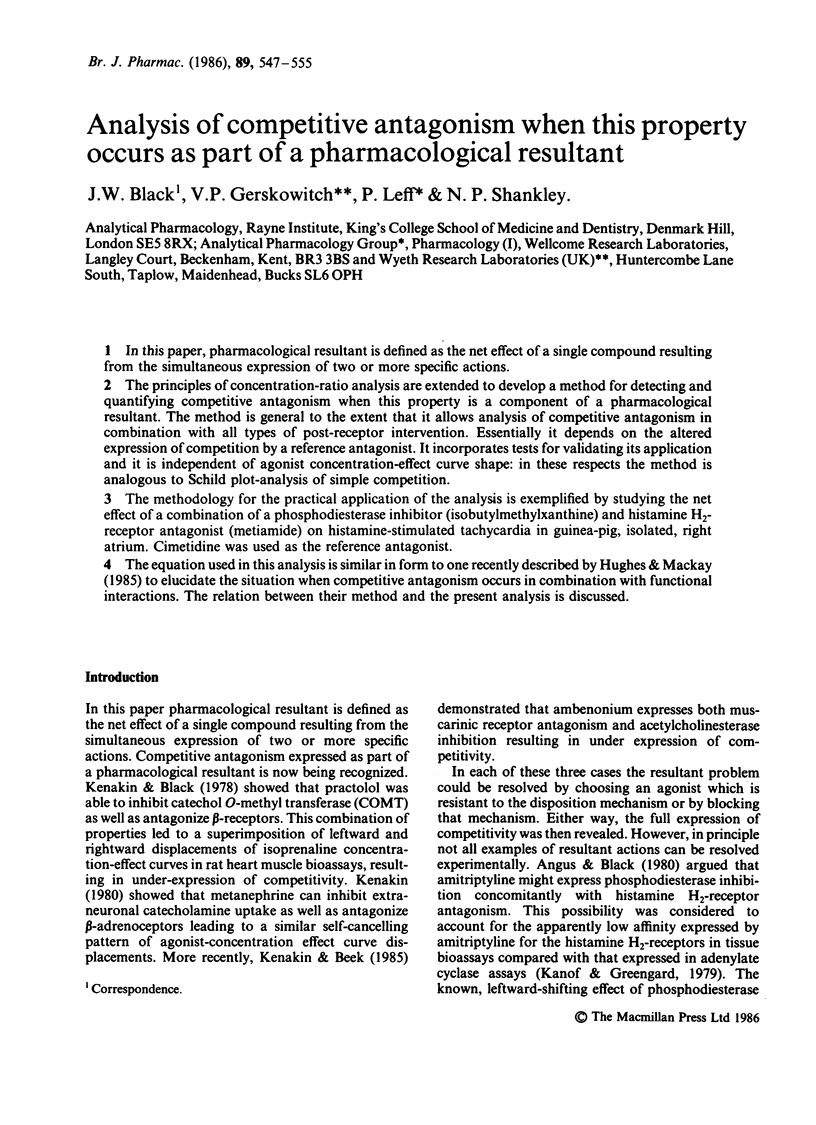
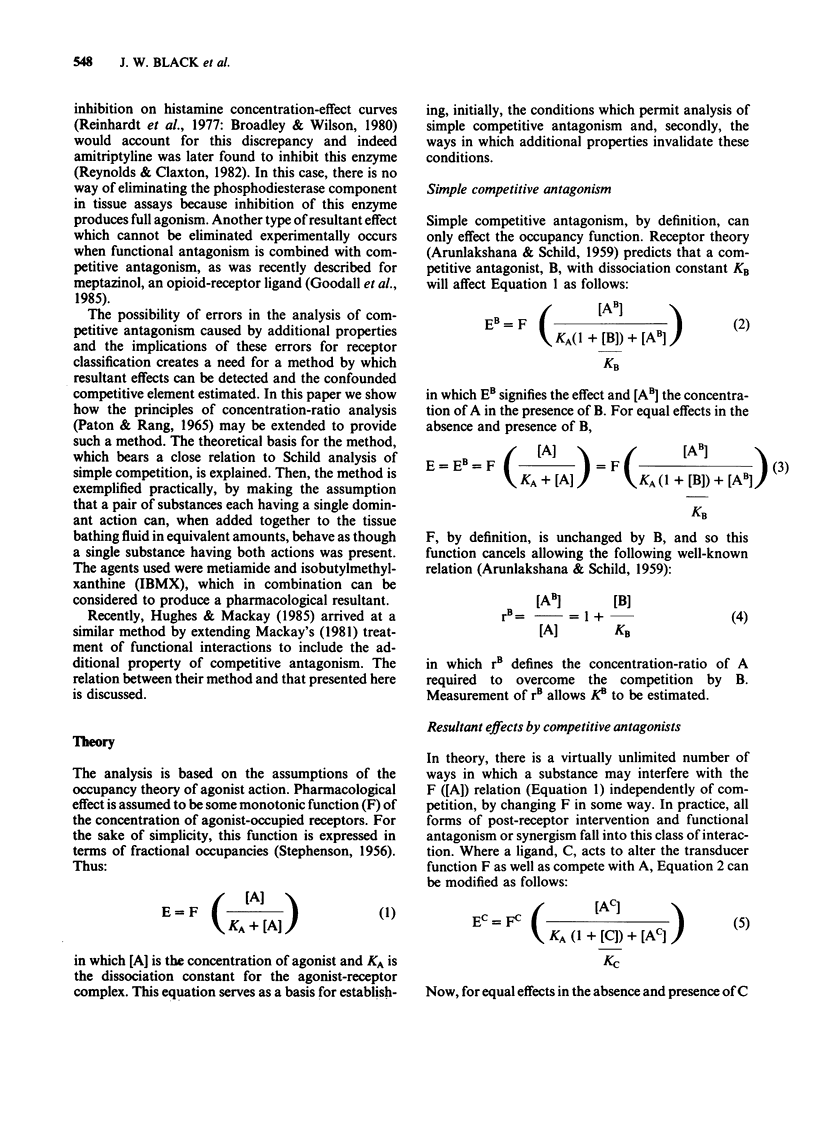
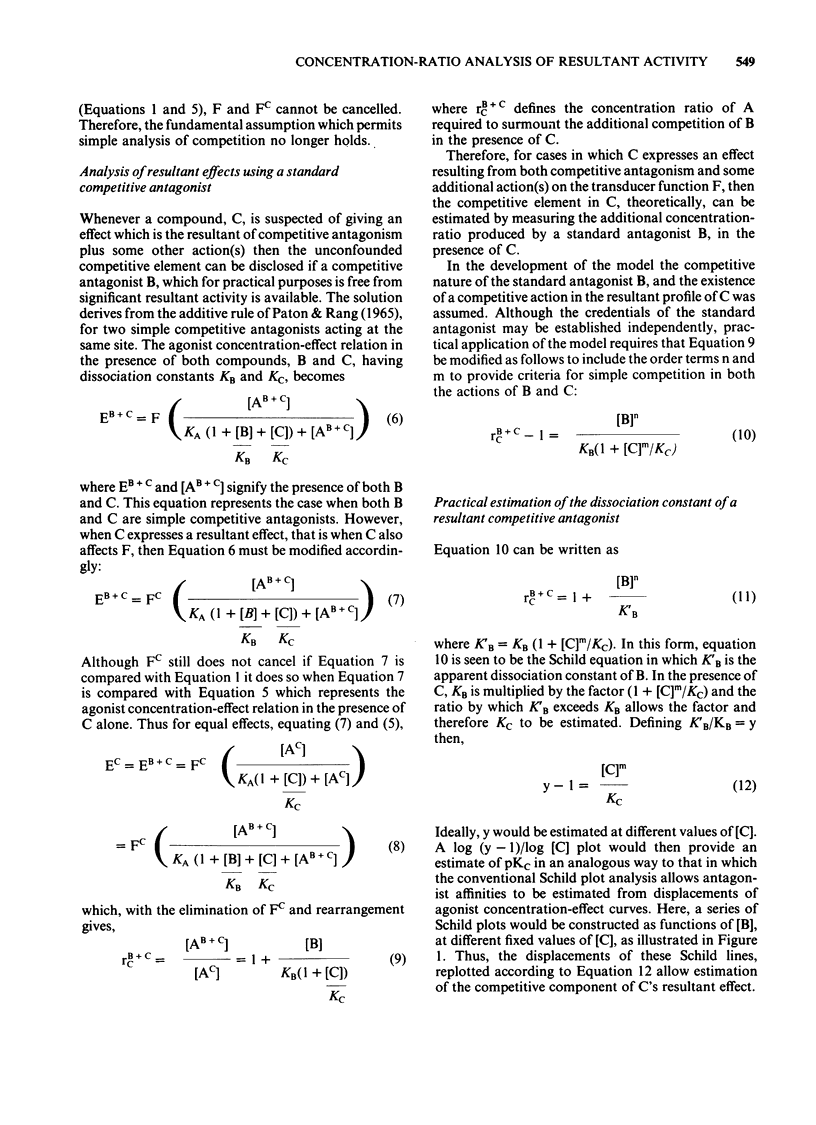
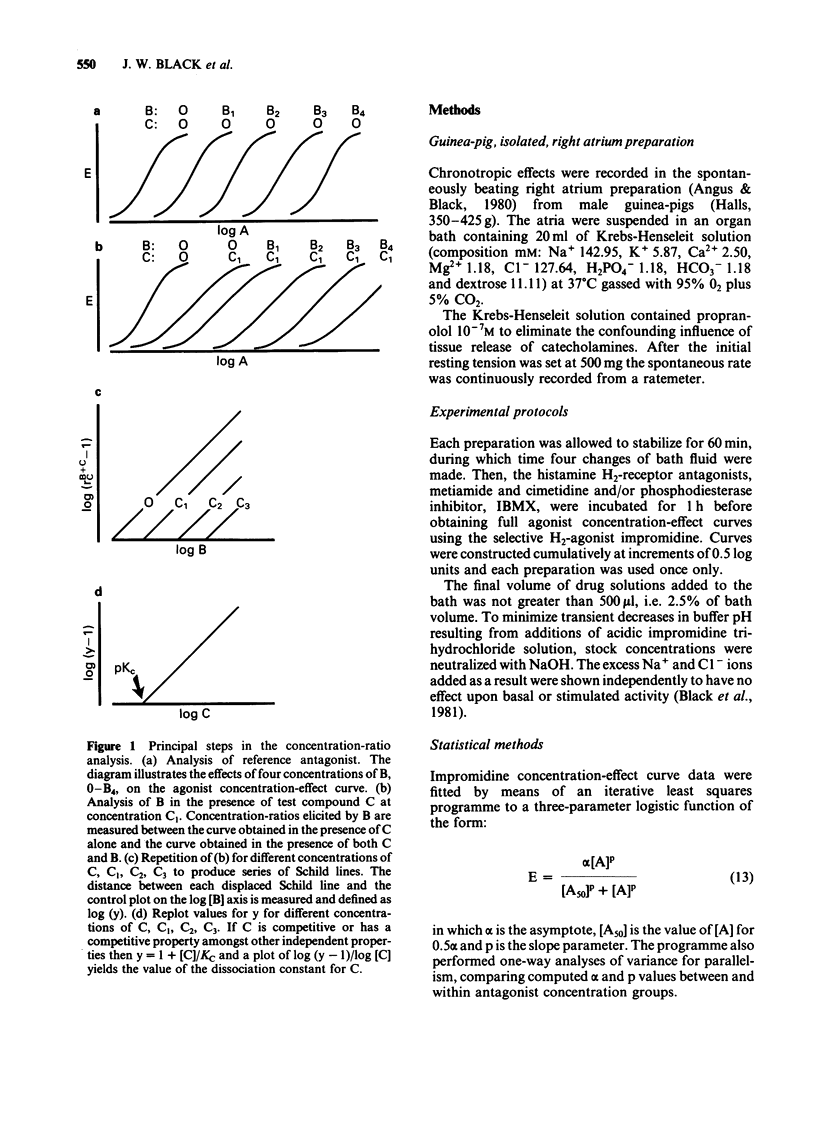
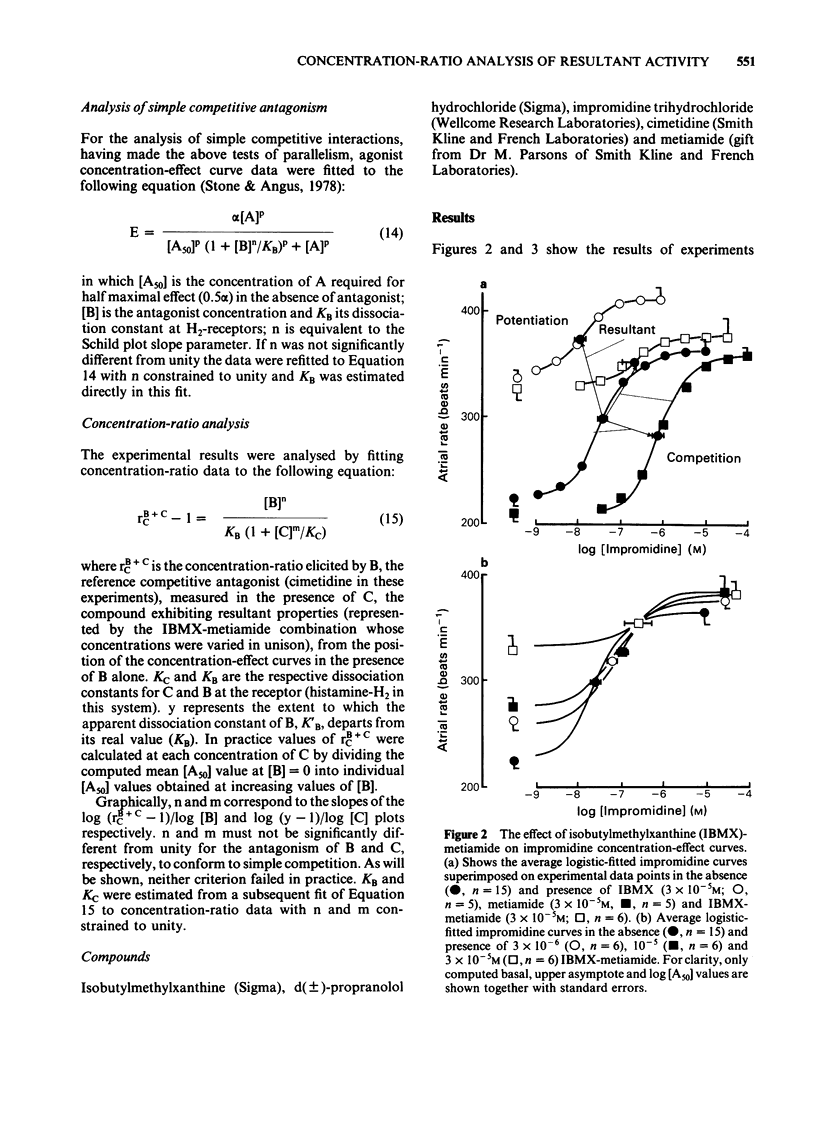
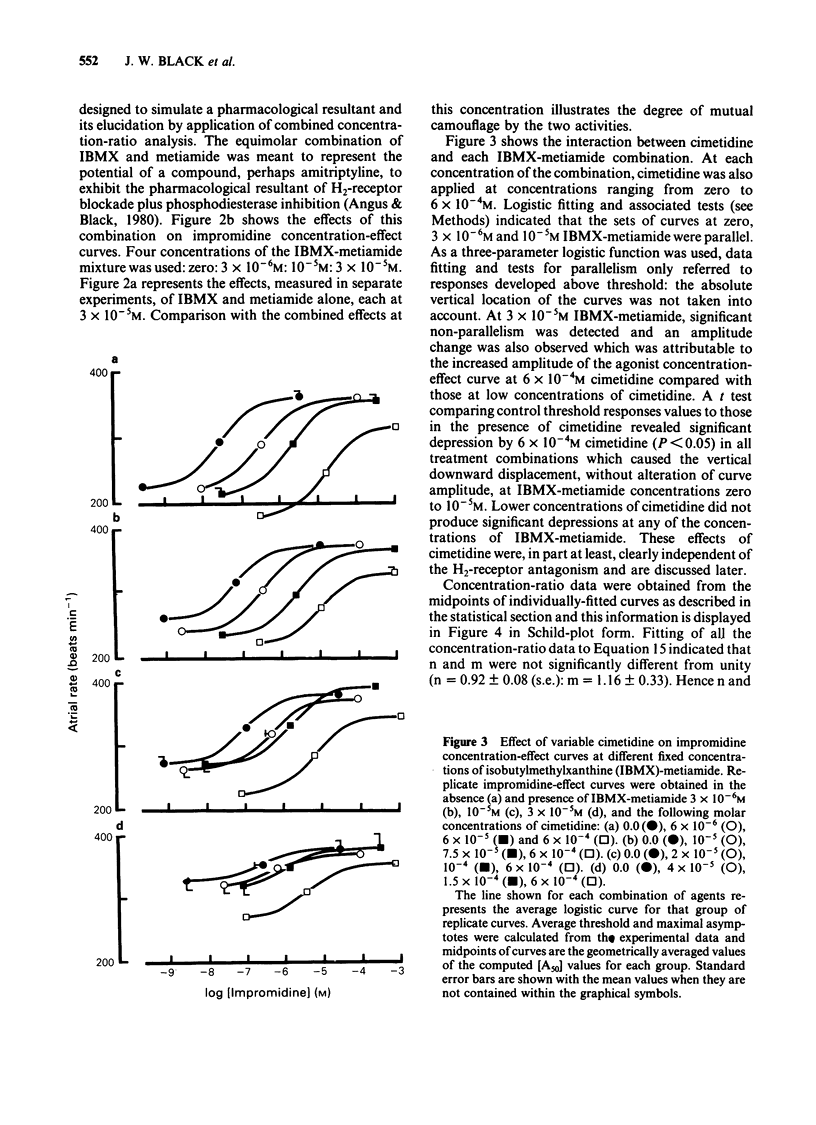
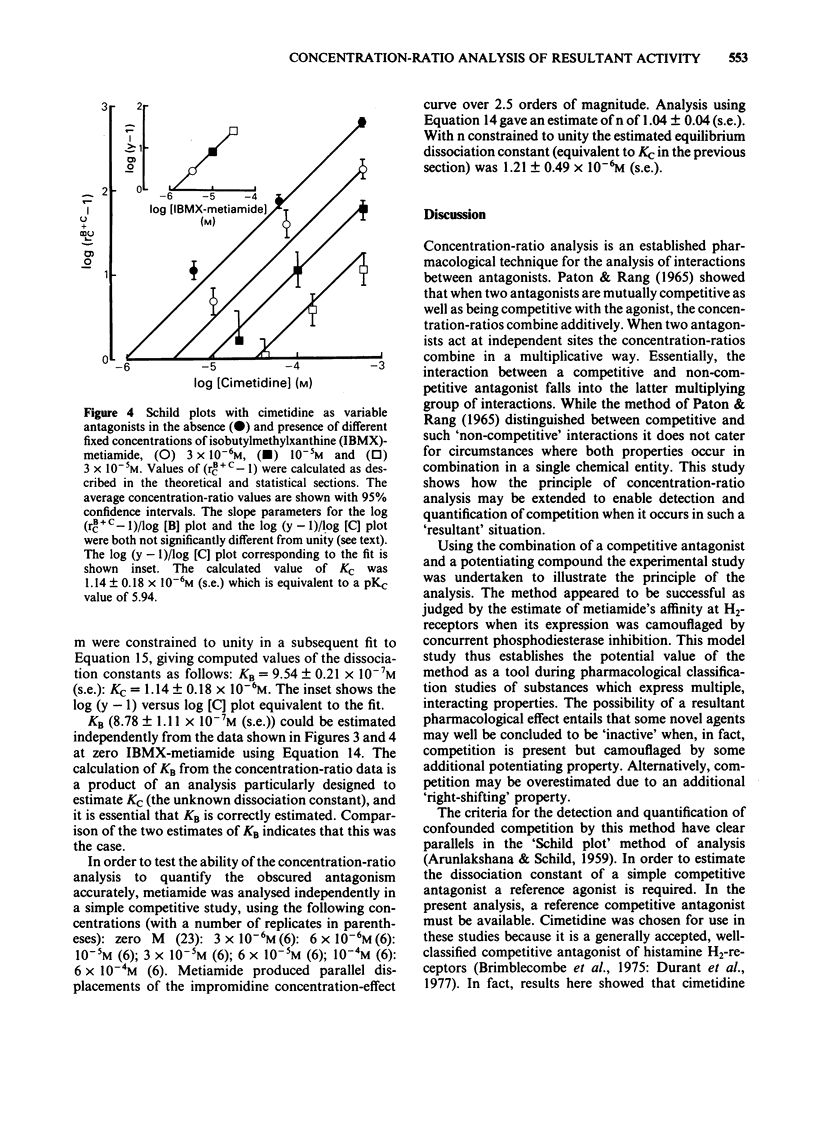
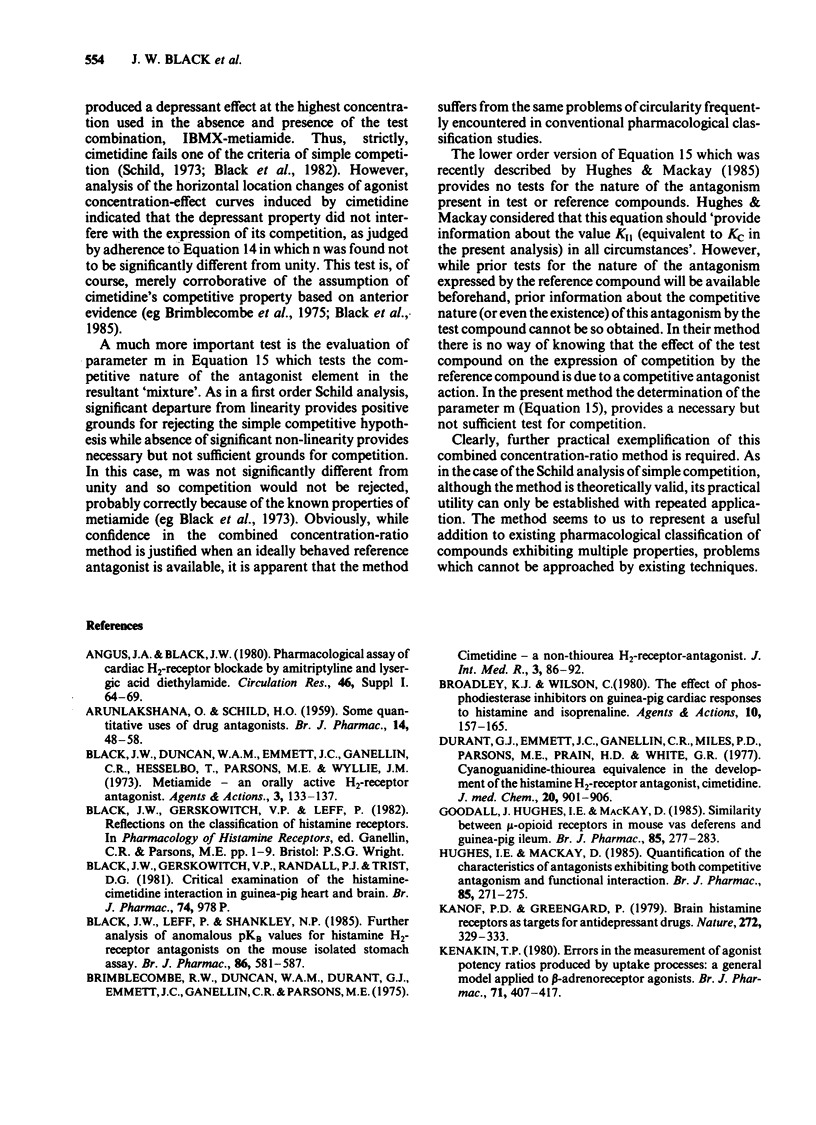
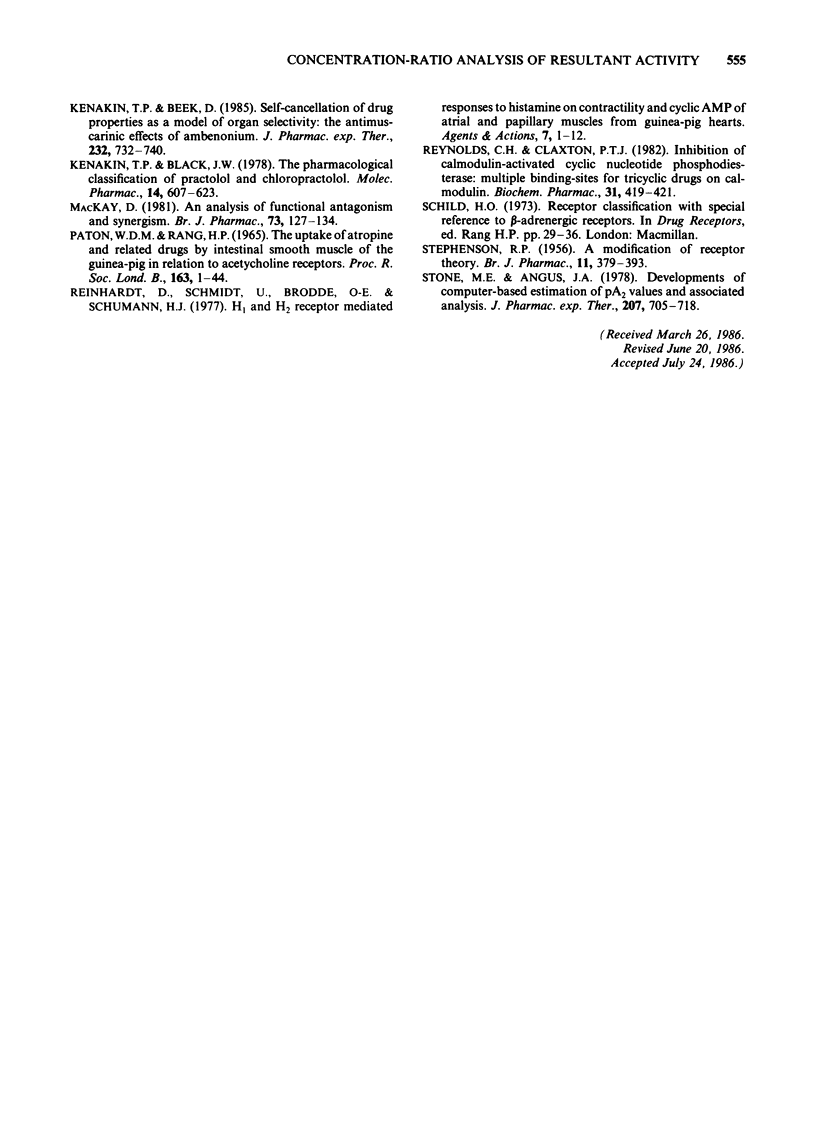
Selected References
These references are in PubMed. This may not be the complete list of references from this article.
- ARUNLAKSHANA O., SCHILD H. O. Some quantitative uses of drug antagonists. Br J Pharmacol Chemother. 1959 Mar;14(1):48–58. doi: 10.1111/j.1476-5381.1959.tb00928.x. [DOI] [PMC free article] [PubMed] [Google Scholar]
- Black J. W., Duncan W. A., Emmett J. C., Ganellin C. R., Hesselbo T., Parsons M. E., Wyllie J. H. Metiamide--an orally active histamine H2-receptor antagonist. Agents Actions. 1973 Oct;3(3):133–137. doi: 10.1007/BF01965723. [DOI] [PubMed] [Google Scholar]
- Black J. W., Leff P., Shankley N. P. Further analysis of anomalous pKB values for histamine H2-receptor antagonists on the mouse isolated stomach assay. Br J Pharmacol. 1985 Nov;86(3):581–587. doi: 10.1111/j.1476-5381.1985.tb08934.x. [DOI] [PMC free article] [PubMed] [Google Scholar]
- Broadley K. J., Wilson C. The effect of phosphodiesterase inhibitors on guinea-pig cardiac responses to histamine and isoprenaline. Agents Actions. 1980 Apr;10(1 Pt 2):157–165. doi: 10.1007/BF02024203. [DOI] [PubMed] [Google Scholar]
- Durant G. J., Emmett J. C., Ganellin C. R., Miles P. D., Parsons M. E., Prain H. D., White G. R. Cyanoguanidine-thiourea equivalence in the development of the histamine H2-receptor antagonist, cimetidine. J Med Chem. 1977 Jul;20(7):901–906. doi: 10.1021/jm00217a007. [DOI] [PubMed] [Google Scholar]
- Goodall J., Hughes I. E., Mackay D. Similarity between mu-opioid receptors in mouse vas deferens and guinea-pig ileum. Br J Pharmacol. 1985 May;85(1):277–283. doi: 10.1111/j.1476-5381.1985.tb08857.x. [DOI] [PMC free article] [PubMed] [Google Scholar]
- Hughes I. E., Mackay D. Quantification of the characteristics of antagonists exhibiting both competitive antagonism and functional interaction. Br J Pharmacol. 1985 May;85(1):271–275. doi: 10.1111/j.1476-5381.1985.tb08856.x. [DOI] [PMC free article] [PubMed] [Google Scholar]
- Kanof P. D., Greengard P. Brain histamine receptors as targets for antidepressant drugs. Nature. 1978 Mar 23;272(5651):329–333. doi: 10.1038/272329a0. [DOI] [PubMed] [Google Scholar]
- Kenakin T. P., Beek D. Self-cancellation of drug properties as a mode of organ selectivity: the antimuscarinic effects of ambenonium. J Pharmacol Exp Ther. 1985 Mar;232(3):732–740. [PubMed] [Google Scholar]
- Kenakin T. P., Black J. W. The pharmacological classification of practolol and chloropractolol. Mol Pharmacol. 1978 Jul;14(4):607–623. [PubMed] [Google Scholar]
- Kenakin T. P. Errors in the measurement of agonist potency-ratios produced by uptake processes: a general model applied to beta-adrenoceptor agonists. Br J Pharmacol. 1980;71(2):407–417. doi: 10.1111/j.1476-5381.1980.tb10953.x. [DOI] [PMC free article] [PubMed] [Google Scholar]
- Mackay D. An analysis of functional antagonism and synergism. Br J Pharmacol. 1981 May;73(1):127–134. doi: 10.1111/j.1476-5381.1981.tb16781.x. [DOI] [PMC free article] [PubMed] [Google Scholar]
- PATON W. D., RANG H. P. THE UPTAKE OF ATROPINE AND RELATED DRUGS BY INTESTINAL SMOOTH MUSCLE OF THE GUINEA-PIG IN RELATION TO ACETYLCHOLINE RECEPTORS. Proc R Soc Lond B Biol Sci. 1965 Aug 24;163:1–44. doi: 10.1098/rspb.1965.0058. [DOI] [PubMed] [Google Scholar]
- Reinhardt D., Schmidt U., Brodde O. E., Schümann H. J. H1 - and H2-receptor mediated responses to histamine on contractility and cyclic AMP of atrial and papillary muscles from guinea-pig hearts. Agents Actions. 1977 Mar;7(1):1–12. doi: 10.1007/BF01964874. [DOI] [PubMed] [Google Scholar]
- Reynolds C. H., Claxton P. T. Inhibition of calmodulin-activated cyclic nucleotide phosphodiesterase: multiple binding-sites for tricyclic drugs on calmodulin. Biochem Pharmacol. 1982 Feb 1;31(3):419–421. doi: 10.1016/0006-2952(82)90192-7. [DOI] [PubMed] [Google Scholar]
- STEPHENSON R. P. A modification of receptor theory. Br J Pharmacol Chemother. 1956 Dec;11(4):379–393. doi: 10.1111/j.1476-5381.1956.tb00006.x. [DOI] [PMC free article] [PubMed] [Google Scholar]
- Stone M., Angus J. A. Developments of computer-based estimation of pA2 values and associated analysis. J Pharmacol Exp Ther. 1978 Dec;207(3):705–718. [PubMed] [Google Scholar]


